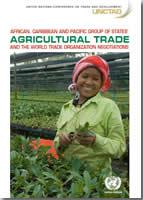
The long-running World Trade Organization (WTO) Doha negotiations remain unresolved. The stumbling block in 2008 was the intransigence of the United States of America over domestic support and the G-331 position on the creation of a safeguard, accessible for developing countries, against import surges and depressed prices (Special Safeguard Mechanism (SSM)). Since 2008, further issues have arisen outside of agriculture, and negotiators appear further from an agreement now than they were then.
Members agreed in 2008 to make linear tariff reductions within bands, but proposed exemptions for sensitive products; while providing for much needed flexibility, this threatened to undermine the reduction of tariffs. Ironically, the greater the reduction of tariffs is, the greater is the potential of exemptions for sensitive products to undermine that reduction. On the other hand, it has repeatedly been shown that WTO members require some flexibility to protect politically sensitive sectors.
Analysis at the time suggested that although developing countries as a group would benefit from the proposed reductions in tariffs, domestic support and export subsidies, the benefits were not evenly distributed. Indeed, many African, Caribbean and Pacific Group of States (ACP) countries were likely to become worse off as the result of loss of preferential access as most-favoured nation (MFN) tariffs were lowered. In addition, the rising price of temperate products would raise the costs of imports, worsening their terms of trade from two directions.
In this paper, we examine the formula proposed in the 2008 draft modalities and compare it with the one proposed by Paraguay in March 2015. We attempt to take into account how the world has changed since 2008, by looking at the changes in tariffs facing ACP countries, in agricultural prices and in domestic support. We then examine proposed tariff cuts at a six-digit level. Next, the initial and final tariffs are aggregated to 24 sectors and analysed within a well-known general equilibrium model, the Global Trade Analysis Project (GTAP), to assess the impacts on welfare and trade flows for ACP countries. We conclude with recommendations for ACP countries in the WTO negotiations.


